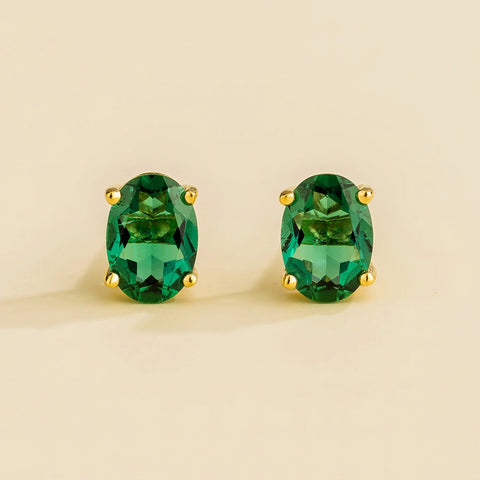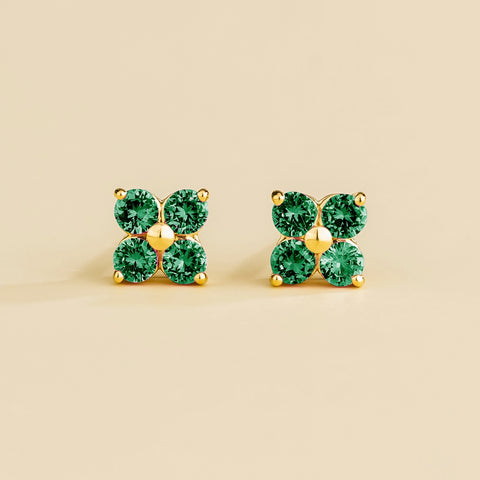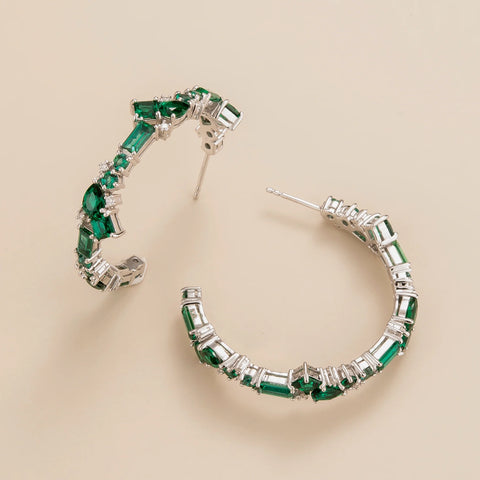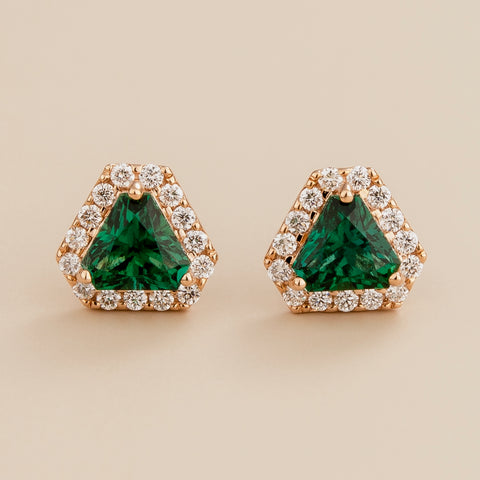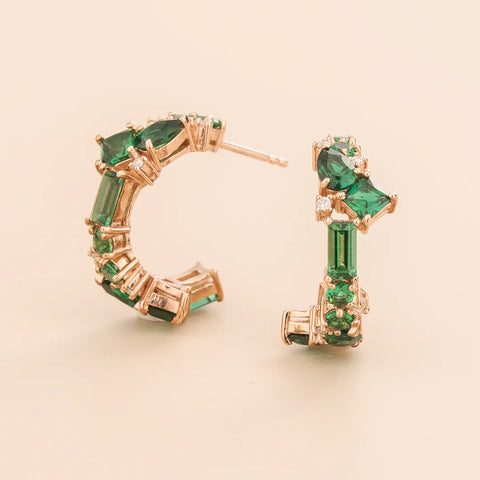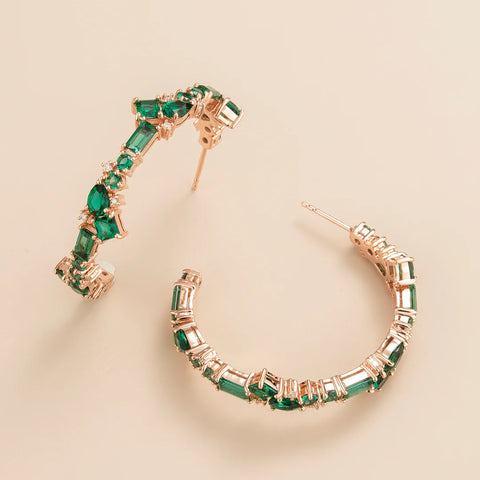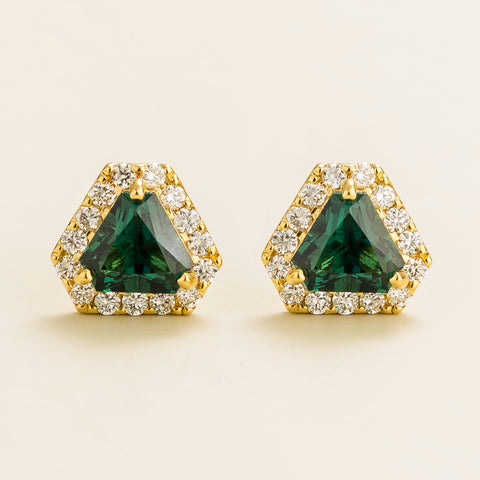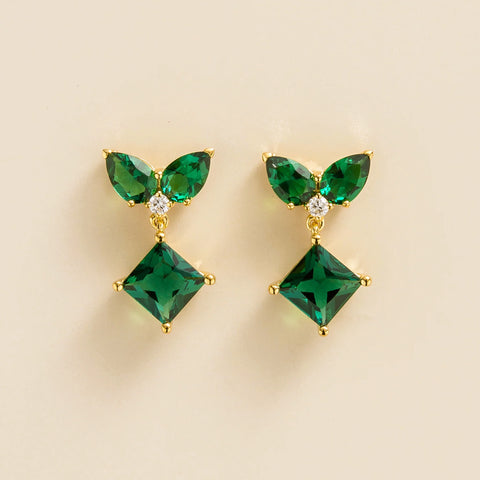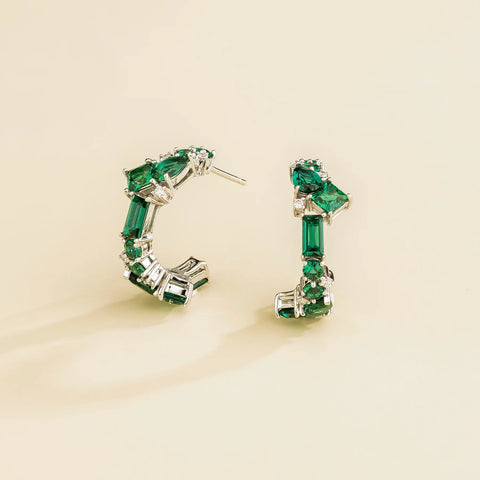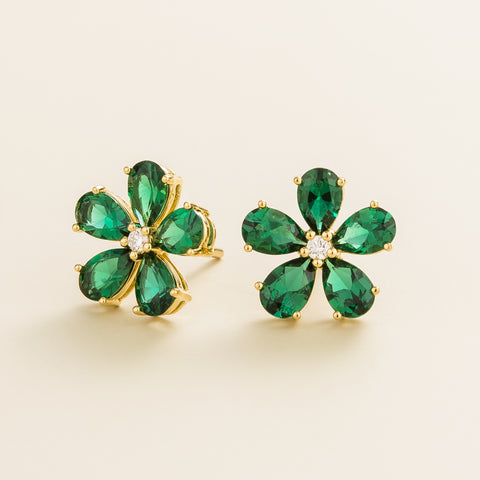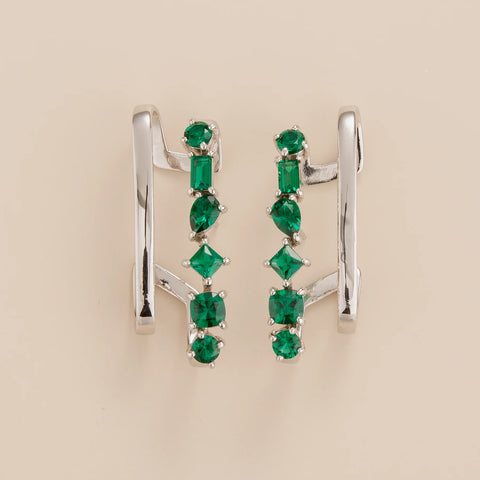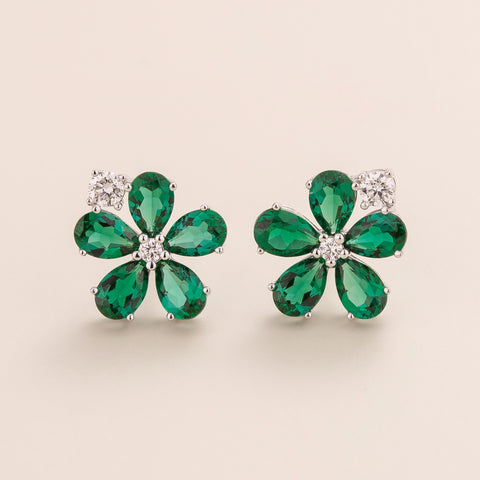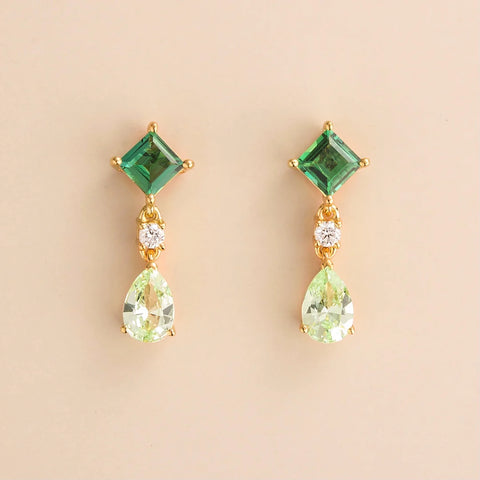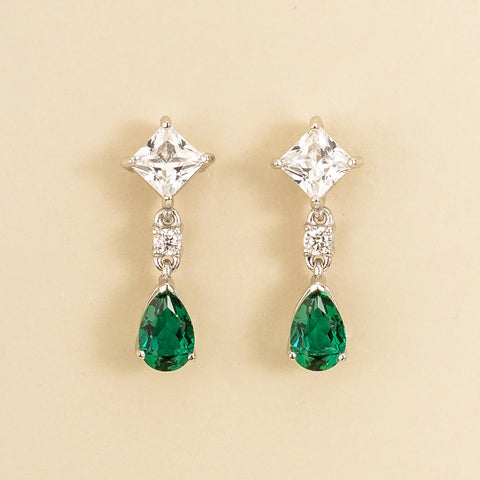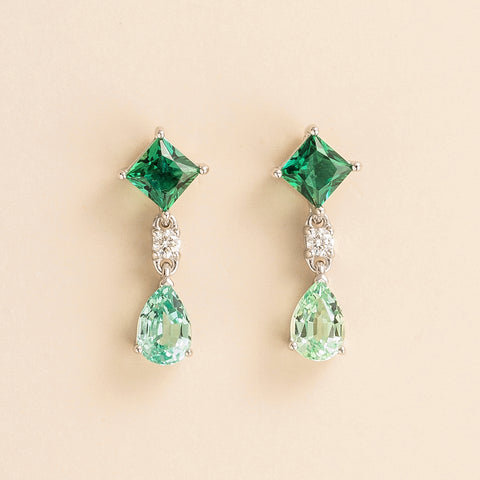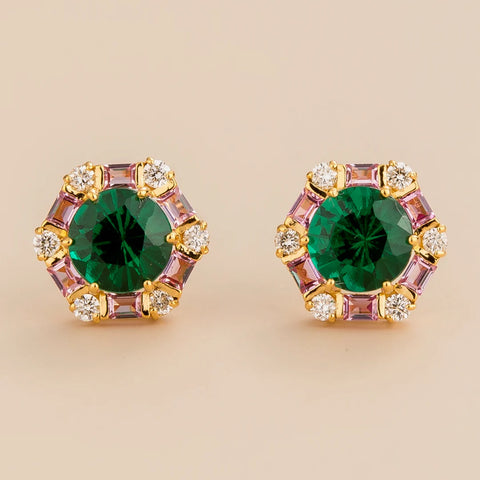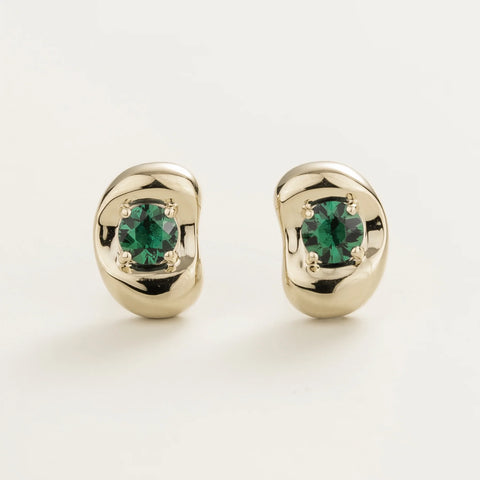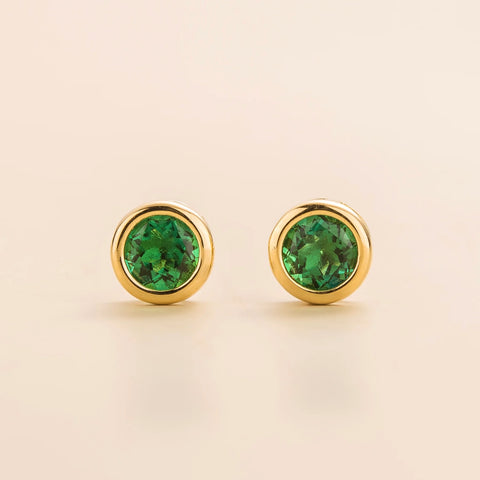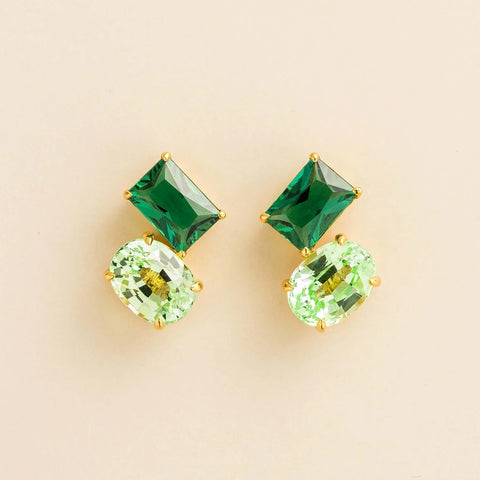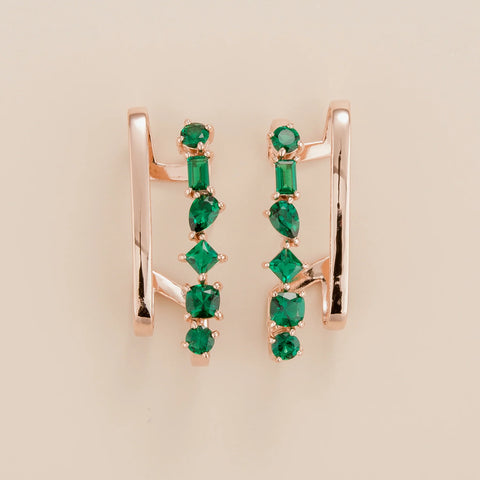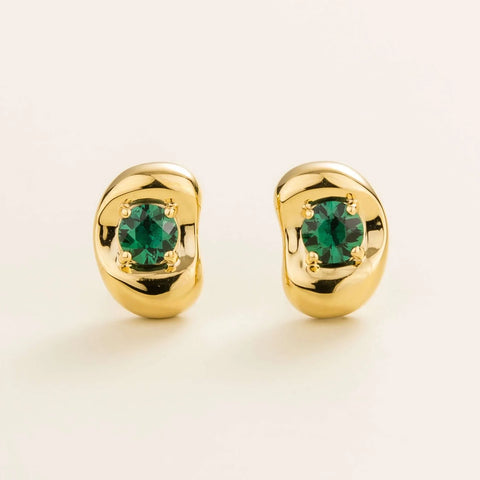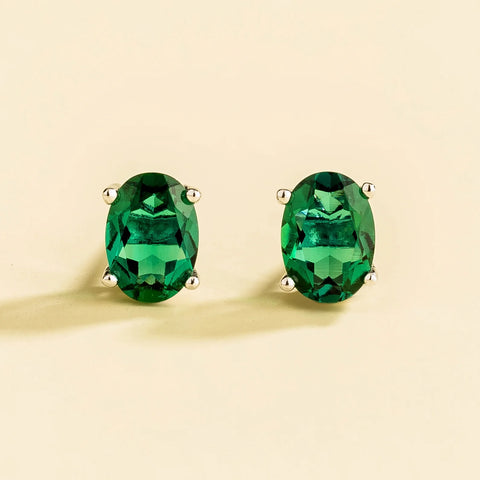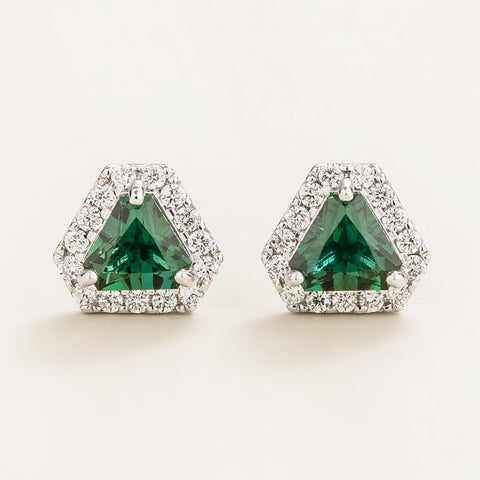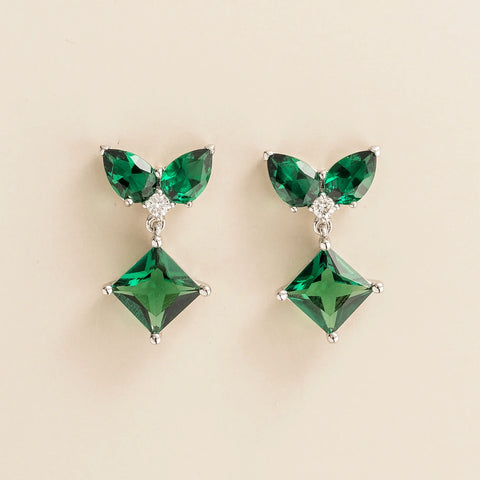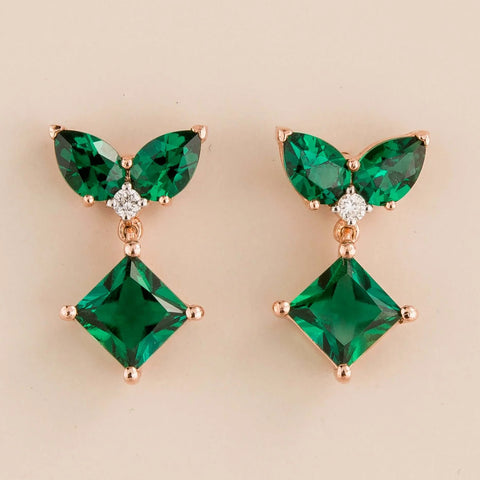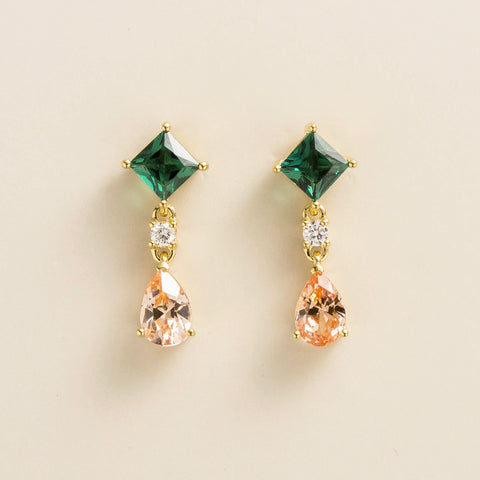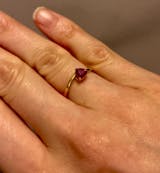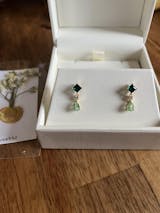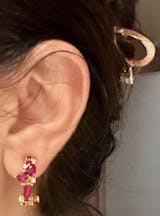
History Of Emerald Earrings: Evolution Through Different Eras
Table of Content: Inside this Article
...- Ancient Civilizations: The Birth of Emerald Adornment
- Mediaeval Mystique: Emeralds in the Middle Ages
- Renaissance Splendour: The Rebirth of Emerald Artistry
- Selecting Your Ideal Emerald Earrings
- Georgian and Victorian Eras: Emerald Earrings in the Age of Romanticism
- Romantic Symbolism: Emeralds in Georgian Jewellery
- Victorian Opulence: The Golden Age of Emerald Earrings
- Modern Marvels: Emerald Earrings from Art Deco to Contemporary Design
- Art Deco Revolution: Geometric Emerald Elegance
- Contemporary Creations: Emerald Earrings in the 21st Century
- Conclusion: The Timeless Appeal of Emerald Earrings
- Frequently Asked Questions About Emerald Earrings
- What makes emerald earrings so valuable?
- How can I tell if my emerald earrings are authentic?
- Are there different types of emerald cuts for earrings?
- What's the difference between natural and lab-grown emeralds in earrings?
- Can emerald earrings be worn every day?
- What's the significance of emerald as a birthstone?
- Are antique emerald earrings a good investment?
- How do emerald earrings compare to other gemstone earrings?
- Where can I find ethically sourced emerald earrings?
When we hear the word "emerald ", it's very common that we think of a precious gemstone. In fact, people have adorned themselves with emeralds starting from ancient times and up until today. This is why emeralds are one of the most popular gemstones in the world.
This precious stone is prized for their rarity and enduring beauty.
It is among those most coveted precious stones due to its rich, green hue.
If you're looking to add a piece of jewellery into your collection, then an emerald jewellery, particularly emerald earrings could be just the thing for you!
Its history is as fascinating as its beauty and learning more about it is even more exciting. In this article, we will talk about the extraordinary history of emerald earrings and its significance today.
Ancient Civilizations: The Birth of Emerald Adornment
The allure of emeralds has captivated humanity for millennia, but perhaps nowhere is their enchantment more deeply embedded than in the annals of Ancient Egypt.
These verdant gems, often associated with eternal life and fertility, were prized possessions of the pharaohs and nobility during those ancient times.
Egyptian Opulence: Emeralds Fit for Pharaohs
The Egyptians believed that the Nile River, the lifeblood of their civilisation, was a manifestation of the goddess Isis. As the emerald's hue mirrored the lush green vegetation that thrived along the river's banks, it was naturally linked to Isis and, by extension, the concept of rebirth and immortality. This profound connection ensured the emerald's status as a sacred gemstone.
Moreover, the emerald's association with the heart chakra aligned perfectly with the Egyptian emphasis on the afterlife. It was believed that the heart, or ba, was weighed against a feather of truth during the judgement of the soul. A pure heart, symbolised by the emerald's clarity, was essential for entry into the afterlife.
Pharaohs, as divine rulers, were also adorned with the most exquisite jewellery, and emeralds were a cornerstone of their regalia.
From crowns and sceptres to necklaces and bracelets, these precious stones adorned the royal personage, signifying their power, wealth, and divine status.
Emerald earrings, in particular, were a favoured accessory of Egyptian queens. Emerald is Queen Cleopatra's favourite. These delicate yet striking pieces of jewellery would have dangled from the ears, accentuating the wearer's beauty and regal bearing.
Archaeologists believe that emerald earrings were not merely adornments but also possessed symbolic significance, perhaps as talismans or offerings to the gods.
While many treasures of Ancient Egypt remain lost to time, archaeological discoveries continue to unveil the opulence of this bygone era.
Several notable finds have shed light on the Egyptians' fascination with emeralds, including:
- The Tomb of Tutankhamun: Though primarily associated with gold, the boy king's tomb also yielded exquisite emerald jewellery, including intricate earrings.
- The Amarna Period: The Amarna Period, renowned for its artistic innovation, also showcased distinctive emerald jewellery designs that reflected the era's unique aesthetic.
- The Royal Necropolis at Abydos: The Royal Necropolis at Abydos, a historic burial ground, has yielded a wealth of artefacts, including exquisite emerald earrings that once adorned the ears of Egypt's elite.
These discoveries offer a glimpse into the world of the pharaohs and their obsession with the emerald.
They remind us of the enduring allure of this gemstone and the rich tapestry of history from which it emerges.
Greco-Roman Elegance: Emeralds in Classical Antiquity
The beauty and allure of the emerald transcended geographical boundaries, finding its place in the hearts and adornments of the ancient Greeks and Romans. These classical civilizations, renowned for their artistic and cultural achievements, embraced the emerald as a symbol of wealth, beauty, and divine connection.
Emerald earrings were coveted possessions in both Greece and Rome, adorning the ears of noblewomen and, occasionally, high-status men. These exquisite pieces of jewellery were often crafted with intricate designs, showcasing the skill of the period's artisans.
The emerald's rich green hue complemented the fair complexions of the era, making it a popular choice for enhancing feminine beauty.

Image Source: Johns Hopkins Archeological Museum
Beyond aesthetics, emerald earrings carried symbolic weight.
In Greek mythology, the emerald was associated with Aphrodite, the goddess of love and beauty.
As such, the gemstone was believed to inspire passion, fertility, and harmony. Roman culture also ascribed mystical properties to the emerald, linking it to protection, wisdom, and good fortune.
To understand the prevalence of emeralds in Greece and Rome, it's essential to trace the trade routes that brought these precious stones to the Mediterranean.
While the exact origins of the emeralds used by these civilizations are still debated, it is generally accepted that they were sourced from Egypt and possibly other regions in the Near East.
The Egyptians, as discussed earlier, had a deep-rooted affinity for emeralds. As their empire expanded and trade networks developed, emeralds became a prized commodity.
Through a complex network of overland and maritime routes, these gemstones found their way to the bustling markets of Greece and Rome.
The emerald's significance in Greek and Roman cultures extended beyond its aesthetic appeal.
These gemstones were often incorporated into religious rituals and ceremonies.
Priests and priestesses might wear emerald amulets for protection or to facilitate divine communication.
Moreover, the emerald's association with vision and clarity made it a symbol of wisdom and insight. Philosophers and scholars were sometimes depicted with emeralds, suggesting their intellectual prowess.
Mediaeval Mystique: Emeralds in the Middle Ages
The Middle Ages witnessed a resurgence of interest in gemstones, and the emerald was no exception.
Its rich history, coupled with its association with beauty and power, made it a coveted adornment for the aristocracy.
Royal Treasures: Emeralds in European Courts
Emerald earrings became emblematic of wealth and status during the Middle Ages.
As symbols of power, they adorned the ears of queens, princesses, and noblewomen.
These exquisite pieces were often crafted in elaborate designs, incorporating gold, silver, and other precious stones to enhance the emerald's allure.
From the opulent courts of France to the grand palaces of England, emerald earrings were a staple of royal jewellery collections.
Many of these historical pieces have been lost to time, but a few notable examples have survived.
For instance, the Virgin of Pilar, now displayed in the Victoria and Albert Museum, London.
Furthermore, the influence of the Church was profound during the Middle Ages, and this is reflected in the design of emerald jewellery.
Religious symbolism was often incorporated into pieces, with the emerald representing faith, hope, and charity. Many earrings featured Christian motifs, such as crosses or religious icons, adorned with emeralds.
Eastern Elegance: Emeralds in Islamic Jewellery
The Islamic world, renowned for its artistic and cultural achievements, embraced the emerald with equal fervour as its European counterparts. This verdant gemstone found a prominent place in the intricate and opulent jewellery of Islamic empires.
Emerald earrings were highly prized possessions in Islamic societies. They adorned the ears of sultanas, princesses, and noblewomen, symbolising wealth, status, and beauty. Islamic jewellers were masters of their craft, creating exquisite earrings that showcased the emerald's brilliance.
Intricate designs, often incorporating calligraphy, geometric patterns, and floral motifs, characterised these pieces.
The emerald's green hue was often associated with paradise in Islamic culture, making it a particularly meaningful gemstone.
As such, emerald earrings were not merely adornments but also carried spiritual significance.
In Islamic tradition, the emerald held a special place.
It was believed to possess healing properties, protect against evil, and bring good fortune.
The gemstone was often associated with knowledge, wisdom, and patience. These beliefs contributed to the emerald's popularity and its incorporation into various forms of Islamic art and jewellery.
Unfortunately, many examples of Islamic emerald earrings have been lost or dispersed over centuries. However, some historical records and surviving pieces offer glimpses into the opulence of these adornments.
The Mughal Empire, known for its exquisite craftsmanship, produced some of the most renowned emerald jewellery.
The Taj Mahal, a testament to Mughal artistry, is adorned with numerous precious stones, including emeralds. While not earrings, the use of emeralds in such a monumental structure highlights their significance.
Renaissance Splendour: The Rebirth of Emerald Artistry
The Renaissance marked a period of extraordinary cultural and artistic rebirth, and the world of jewellery was no exception. The emerald, with its rich history and captivating allure, experienced a renewed prominence during this era.
Artistic Innovation: New Designs in Emerald Earrings
The Renaissance was a time of experimentation and innovation, and these qualities are evident in the design of emerald earrings. Inspired by the classical world, artists and jewellers drew on Greek and Roman motifs to create elegant and sophisticated pieces.
The human form, often depicted in Renaissance art, influenced earring designs, with delicate chains and pendants incorporating emeralds.
Emerging cutting techniques also played a vital role in enhancing the emerald's beauty. As lapidary skills improved, jewellers were able to extract more brilliance and colour from the gemstone.
Faceting techniques evolved, allowing for greater light dispersion and depth.
Many famous Renaissance paintings feature women adorned with exquisite emerald earrings.
These artworks serve as a testament to the emerald's popularity and its role as a symbol of wealth, status, and beauty.
One example is the coronation portrait of Empress Josephine, wife of Napoleon Bonaparte.
Empress Josephine is often depicted in portraits adorned with lavish jewels, ranging from cameo sets to striking emerald and diamond ensembles.
While it's uncertain if all the jewellery shown in these paintings was real, there's evidence suggesting the existence of the emerald pieces she wears in one particular portrait.
Many jewels resembling those worn by Josephine are part of the Norwegian crown jewels, inherited through her descendants. Alternatively, these emeralds might have been repurposed into the emerald set gifted to her daughter, now housed at the Victoria and Albert Museum. Regardless, the portrait's opulence is undeniably enhanced by the exquisite jewellery.
Selecting Your Ideal Emerald Earrings
While the history of emerald earrings is fascinating, choosing the perfect pair for yourself can be a delightful yet challenging experience.
The rich green hues of emeralds have captivated jewellery enthusiasts for centuries, but selecting the right pair involves more than just admiring their beauty.
From understanding the Four C's - colour, clarity, cut, and carat weight - to considering your face shape and skin tone, there are numerous factors to weigh.
If you're looking to add these timeless gems to your collection or searching for the perfect gift, it's crucial to arm yourself with knowledge. For a comprehensive guide on navigating the world of emerald earrings, including expert tips on quality assessment and style selection, our article on how to choose the perfect emerald earrings offers invaluable insights. With this information, you'll be well-equipped to select a pair of emerald earrings that not only dazzles the eye but also holds its value and beauty for years to come.
Exploration and Trade: New Sources of Emeralds
The Age of Exploration had a profound impact on the jewellery world, including the emerald trade.
As European explorers ventured to distant lands, new sources of emeralds were discovered.
The discovery of Colombian emeralds in the 16th century was particularly significant.
These emeralds were renowned for their exceptional colour and clarity, surpassing those from earlier sources.
The influx of Colombian emeralds led to a dramatic shift in emerald earring designs, as jewellers experimented with new settings and styles to showcase the gemstone's brilliance.
New trade routes also influenced emerald earring styles.
With increased contact with different cultures, European jewellers incorporated elements from other civilizations into their designs.
For instance, the intricate patterns and motifs of Islamic jewellery found their way into Renaissance emerald earrings, creating a unique and eclectic aesthetic.
Georgian and Victorian Eras: Emerald Earrings in the Age of Romanticism
The Georgian and Victorian eras marked a period of profound social and aesthetic change, and these shifts were reflected in the evolving styles of jewellery.
The emerald, a gemstone steeped in history, continued to captivate hearts and adorn ears throughout these periods.
Romantic Symbolism: Emeralds in Georgian Jewellery
The Georgian era was characterised by a spirit of romanticism and sentimentality. Emerald earrings became integral to the rituals of courtship. These gemstones, associated with love, hope, and fidelity, were often exchanged as tokens of affection.
Sentimental jewellery, featuring hidden compartments or secret messages, gained popularity, and emeralds were frequently incorporated into these pieces.
Notable examples of Georgian emerald earrings often display delicate designs with floral motifs, reflecting the era's emphasis on nature and emotion.
Modern jewellers like Juvetti have recreated these classic designs, offering contemporary interpretations of Georgian emerald earrings.
Victorian Opulence: The Golden Age of Emerald Earrings
Queen Victoria's reign ushered in an era of unparalleled opulence and extravagance, and this was evident in the realm of jewellery.
Emerald earrings enjoyed a resurgence in popularity, becoming coveted possessions for women of all social classes.
The discovery of new emerald deposits, coupled with advancements in gem-cutting techniques, resulted in a wider availability of these precious stones.
Victorian emerald earrings showcased a variety of styles, from the delicate and romantic designs of the early period to the more elaborate and opulent pieces of the later years.
The influence of archaeological discoveries, particularly those related to ancient Egypt, is evident in many Victorian emerald designs.
The iconic 'mourning jewellery' of the Victorian era often incorporated emeralds, as the green colour was associated with hope and eternal life. Famous Victorian emerald earrings, worn by figures such as Queen Victoria herself and members of the aristocracy, have become legendary symbols of the era's grandeur.
Contemporary designers often draw inspiration from these iconic pieces, and Juvetti is one such brand that offers a modern take on Victorian emerald earrings.
Modern Marvels: Emerald Earrings from Art Deco to Contemporary Design
The 20th century witnessed a dramatic evolution in jewellery design, and the emerald remained a captivating centrepiece. From the geometric elegance of Art Deco to the diverse expressions of contemporary artistry, emerald earrings have continued to enchant and inspire.
Art Deco Revolution: Geometric Emerald Elegance
The Art Deco movement, characterised by its bold lines, geometric shapes, and luxurious materials, had a profound impact on jewellery design.
Emerald earrings became iconic symbols of the era, showcasing the period's penchant for opulence and modernity.
Art Deco jewellers often combined emeralds with contrasting materials such as onyx, platinum, and diamonds, creating striking and visually arresting pieces.
Art Deco emerald earrings were often associated with iconic style icons like Coco Chanel and the Duchess of Windsor.
Beyond design, Art Deco also brought advancements in jewellery techniques.
New methods of cutting and setting emeralds allowed for greater brilliance and precision. The use of platinum as a setting material also provided a strong and modern foundation for these dazzling gemstones.
Contemporary Creations: Emerald Earrings in the 21st Century
The 21st century has witnessed a resurgence of interest in emerald earrings, with designers reinterpreting the gemstone for a modern audience.
Contemporary emerald earrings showcase a wide range of styles, from minimalist and understated to bold and extravagant. The use of mixed metals, such as yellow gold and rose gold, adds depth and complexity to these designs.
One of the most significant developments in the world of emeralds is the creation of lab-grown gemstones.
These cultured emeralds offer an ethical and sustainable alternative to mined stones, without compromising on beauty or quality. Juvetti is a prime example of a brand offering stunning lab-grown emerald earrings. Many contemporary designers incorporate lab-grown emeralds into their collections, making these stunning gemstones accessible to a wider audience.
Notable designers have contributed to the elevation of emerald earrings in the 21st century.
Their innovative approaches and commitment to craftsmanship have helped solidify the emerald's status as a timeless and coveted gemstone.
Whether you prefer vintage-inspired designs or contemporary creations, there's an emerald earring style to complement your personal aesthetic. To help you navigate the myriad options available, we've compiled a comprehensive guide to the various types of emerald earring styles.
Conclusion: The Timeless Appeal of Emerald Earrings
From the opulence of ancient Egypt to the contemporary fashion scene, emerald earrings have captivated hearts and adorned ears for millennia. Their association with beauty, power, and love has endured through time, making them a timeless symbol of elegance.
As our understanding of sustainability and ethics grows, the future of emerald earrings promises to be even more radiant.
With a commitment to responsible sourcing and innovative design, the emerald's allure will continue to shine brightly.
Juvetti embodies this commitment to sustainability and style. Our collection of ethically sourced emerald earrings offers a modern interpretation of this classic gemstone, allowing you to embrace the rich history of the emerald while making a conscious choice.
Frequently Asked Questions About Emerald Earrings
What makes emerald earrings so valuable?
- Emeralds are prized for their rarity, captivating beauty, and vibrant green colour. Clarity plays a crucial role, with fewer inclusions fetching higher prices. Historical significance and cultural associations also contribute to an emerald's value.
How can I tell if my emerald earrings are authentic?
- Look for a deep, even green colour and inclusions ( birthmarks of the stone ). Common treatments like oiling can be subtle. Seek a professional gemologist for definitive identification.
Are there different types of emerald cuts for earrings?
- Popular cuts include the emerald cut (rectangular), round, and pear. Cuts impact brilliance, size perception, and overall style. Historically, emerald cuts dominated earring design.
What's the difference between natural and lab-grown emeralds in earrings?
- Natural emeralds form underground naturally, while lab-grown ones are created under controlled conditions. Both are beautiful and ethical options. Juvetti uses lab-grown emeralds in their earring collection .
Can emerald earrings be worn every day?
- Emeralds rank 7.5-8 on the Mohs scale, making them relatively durable. Avoid wearing them during rough activities. Choose a design suitable for everyday wear. Here's a complete guide to care and clean your emerald earrings.
What's the significance of emerald as a birthstone?
- Emerald is the birthstone for May. Legend associates it with love, hope, and renewal. Famous figures born in May, like Audrey Hepburn, often donned emerald jewellery.
Are antique emerald earrings a good investment?
- Value depends on origin, condition, and historical significance. Research thoroughly and seek expert advice before purchasing antique pieces. Modern, ethically sourced emeralds can also be valuable heirlooms.
How do emerald earrings compare to other gemstone earrings?
- Emeralds offer a unique green brilliance compared to diamonds (sparkle) or sapphires ( variety of colours). They can be paired with diamonds or other gemstones for added sparkle.
Where can I find ethically sourced emerald earrings?
- Ethical sourcing ensures minimal environmental impact and fair labour practices. Look for certifications and reputable jewellers. Juvetti prioritises ethical practices in their sustainable jewellery.

